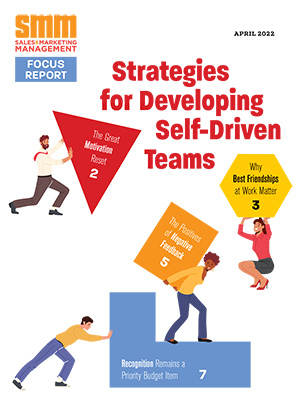It is tougher than ever for sales teams to cut through the clutter and differentiate with prospects. But who can blame them? Sales teams can’t find the right resources, so they spend less time selling than hunting for resources, which means lost opportunities – leading to overall poor sales performance. The facts regarding the buying environment and sales execution are startling:
- 60%1 of the buyer’s purchase decision is complete before sales teams interactive with a prospect
- 58%1 of pipeline ends up in “no decision “or stalled
- 59%2 of sales rep time is spent not selling
- 50%3 of reps are failing to make quota
Here are three new rules of sales execution to give you a fresh approach to stop enabling the poor behavior and start executing.
Rule 1: Conversations, not collateral
Organizations have been “enabling” sales teams with collateral and sales tools to the point of burdening them with too much information. There is a multitude of sales and marketing collateral loaded into sales portals or intranet sites, and countless hours are spent creating, editing and producing this content. This approach is flawed not only in that it is not aligned with current selling situations and disconnected from daily reality, but also becomes incredibly difficult to know if sales teams have even used the content, and how effective it really is.
The shift needs to focus on the desired business outcome. Effective salespeople not only understand the buyer’s marketplace and business issues, but also help them envision solving their problems using their products and services. They get stalled deals moving, present greater value and are able to seamlessly sell new products or cross-sell existing product sets.
Rule 2: Expertise beats product knowledge
Buyers buy from the vendor that best understands their business, the challenges they face, and delivers a clear vision of how to solve them. However, there is often a great deal of time trying to “communicate value and differentiation” of a product or service, and often salespeople don’t see how other reps do this or what they are using and doing to win deals.
No matter how much time marketers and product managers spend with salespeople and customers, they just don’t see enough of what happens at the moments of truth – how buyers are receiving and responding to the messages the sales team delivers. Just look how fast the competitive landscape, the needs of the marketplace, and the product portfolios change. A top-down approach will never keep up.
Sales teams ignore 90%4 of the “selling collateral” that is provided to them. Through trial and error, your salespeople learn something new every day about what works and what doesn’t. In this changed buying environment, it’s critical that your sales and marketing teams collaborate to unlock this treasure. It’s about capturing feedback on what works and doesn’t work, and using that feedback to continuously improve the base of knowledge.
Rule 3: Proven Plays
One thing that sets top salespeople apart from the rest of the pack is that they will never “wing it.” Top reps do the same set of things that have helped them win similar deals in the past. You might say these top performers have a set of repeatable playbooks in their head that have been developed and adapted through years of experience in front of customers.
Average or low performers typically think they are not hitting it out of the park because they just need more at-bats. The problem is they can’t swing the bat like top performers. Often companies roll out a new sales methodology believing that is the missing link to improving sales performance.
A methodology alone won’t move the needle.We want more top performers, so we spend thousands of dollars on sales training events with the hope that methodology and training will give our reps the knowledge, skills, attitude, and structure to become stars.
But it doesn’t work. Studies show that the average salesperson forgets 87%5 of what they learn in sales training within 30 days. The rep gets back to the office, puts the training binder on the shelf, reverts to old habits, and continues to follow the path of least resistance. A sales methodology or process is essential but they usually don’t have the impact they could because there’s no practical way to follow them. A methodology tells you why to do something, but it doesn’t tell you what to do in a specific situation, when to do it, or how to do it.
No amount of training is going to enable a sales rep to be ready to handle every selling situation he or she will encounter.
We can’t keep expecting a different outcome when using the same old approaches. It’s time we made new rules to sell by.
1Sales Benchmark Index
2CSO Insights
3Bridge Group
4IDC
5Corporate Executive Board
Amanda Wilson is Director of Product Marketing & Programs at Qvidian, an innovator in sales execution solutions.


